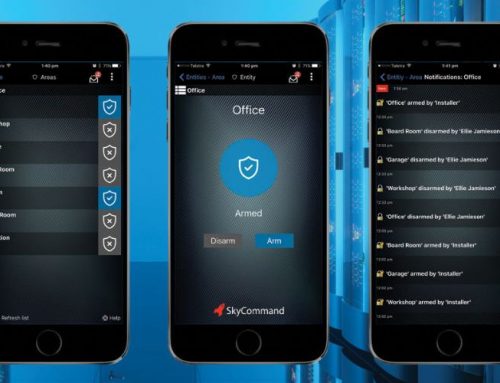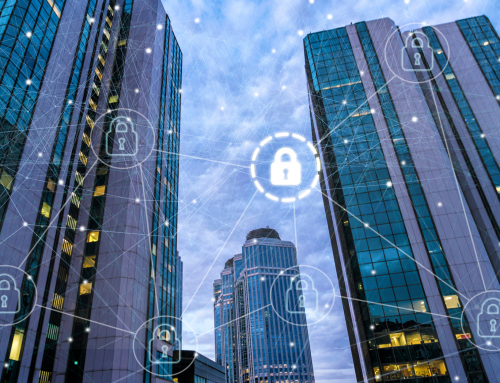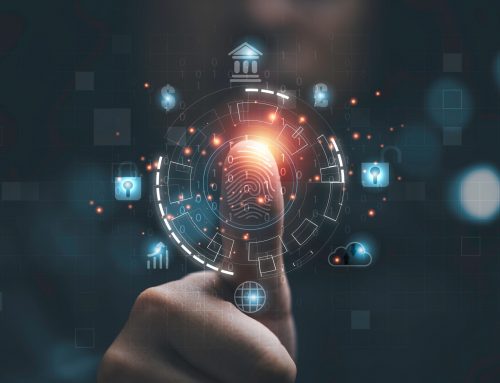 From an age where security measurements were at their most basic to today, where we have the likes of IP cameras, drones, and artificial intelligence. The advances in technology we are witnessing are unforeseen, so much so that thirty years ago we wouldn’t have been able to imagine them.
From an age where security measurements were at their most basic to today, where we have the likes of IP cameras, drones, and artificial intelligence. The advances in technology we are witnessing are unforeseen, so much so that thirty years ago we wouldn’t have been able to imagine them.
And with continued growth of the Internet of Things (IoT) and connected devices, new technologies continue to change the way we communicate, the way we work and the way we live at an unprecedented rate.
Over time changes in technology have bought forward new opportunities for security; motion sensors connected to advanced central units, and security alarms being controlled with a smartphone are just some examples of this.
Read on to discover the latest in technology trends and discover how these technologies are converging and in-turn transforming the security industry…
1. IoT
The Internet of Things (IoT) is the interconnection (via the internet) of multiple computer devices, found in everyday objects, that allow them to send and receive data.
IoT continues to grow at an unprecedented rate, particularly in the security market, so much so that it puts physical security on the cusp of new services with its growing array of sensors, structures and devices.
Network Video Recording (NVR) systems are a prime example of this are, they enable real-time viewing of security cameras from internet-connected devices such as smart phones, helping to deter, detect and defend against new security compromises.
As IoT saturates every facet of our lives, technologies connected to the IoT will become increasingly sophisticated…
2. Artificial Intelligence
AI has matured to the point where it is being used as a competitive gamechanger in the security industry. As its use becomes more prevalent, the security industry is taking advantage of this emerging technology in several ways:
- Computing power (in the Cloud and GPUs)
Currently, a cloud-based server provides a hassle-free connection of security system hardware and software over the internet. In future, cloud services will pave the way for businesses to use machine learning (ML) and AI, radically transforming their usage and understanding of data. While, GPUs (graphics processing units) will help to drive innovations such as the use of smart cameras and video analytics – the limits of this deep learning technology are boundless.
- Machine learning (useful in the prediction of loss prevention)
In 1995, an early form of what could be called “artificial intelligence” was that of NYC’s Police Department’s CompStat (Computer Statistics), implemented to assist in “predictive policing”. Predictive analytics and other AI-powered analysis tools have made significant strides since then, where machines can now learn from past data and create their own knowledge. Users are looking for new ways of gathering more information to gain greater visibility across their network infrastructure, and machine learning (ML) and AI provide this.
- Sensor fusion (useful in image processing for camera systems)
The emergence of artificial neural networks (ANN) has proven to be better than humans in tasks such as visual object recognition, making the use of AI in sensor fusion a tech trend that will undoubtedly develop in time, and demonstrating that artificial intelligence and security are in many ways, made for each other.
3. Computer Vision
Digitisation is the driving force of computer vision, and advances in sensor technology mean physical security systems that employ automated surveillance and computer vision are more effective than ever before. The growth of image sensors, as well as improvements in image processing and analysis, are empowering an extensive range of applications in the security industry including high-quality surveillance and drone applications.
4. Autonomous Drones
Autonomous drones can be used for scheduled patrolling or can react to alarms and other remote triggers helping to drastically reduce unnecessary human patrol visits. With the use of a drone, alarm points can be inspected remotely, and the decision of whether a patrol is needed can be made with ease.
The global market for drones will continue to grow in 2018. Many cities have already added drones for surveillance of potential criminal activity, and it seems likely that smart drones able to detect crimes-in-the-making and alert authorities will be used to reinforce security in airports, major ports and industrial facilities in the near future.
5. Video Surveillance
Video content is increasingly expanding beyond entertainment into industrial applications for security and remote controls. Boosted by emerging technologies, video surveillance has become a service (VSaaS) via camera sensors, network storage and computer power, not to mention automation – human monitoring of screens has been replaced by software algorithms capable of recognising faces and detecting movement, even in the dark.
The Future of Security Tech? Integration Is Key…
You’ll find, simply by reading this article, that many of these top technology trends integrate with one another. For instance, video surveillance need sensor fusion, and machine learning is nothing without AI. And the list goes on. As each of these intelligent features connect via the IoT and integrate, security systems will become far more advanced than anything we’ve ever seen before.






